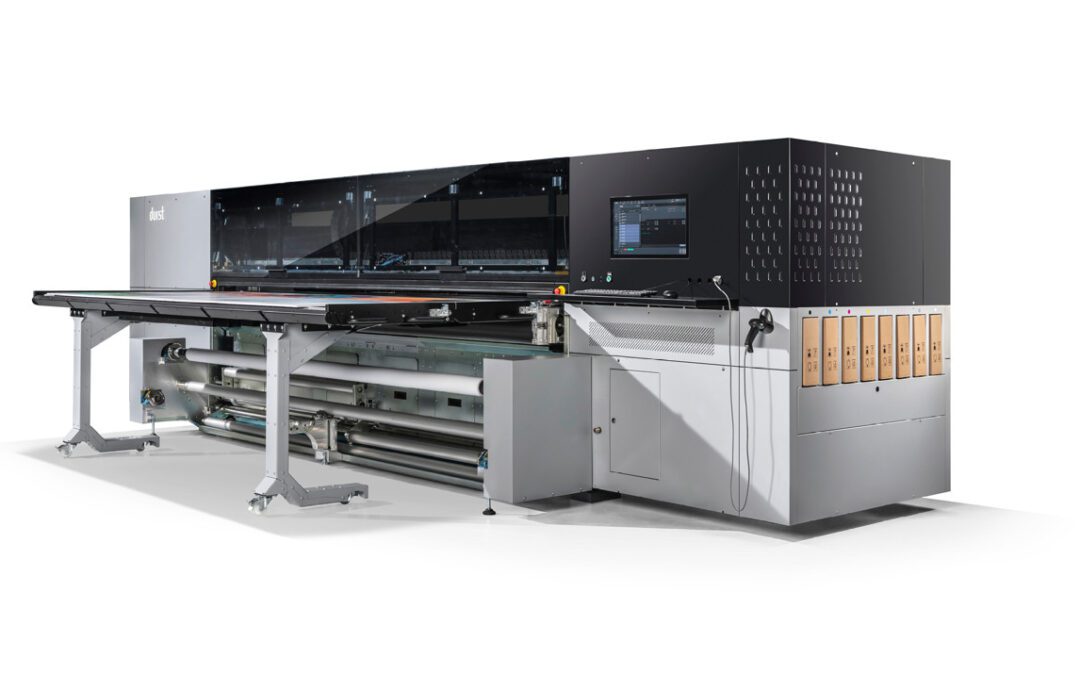Sustainability has two definitions, but one predominantly takes space in our minds, and that is the “avoidance of the depletion of natural resources in order to maintain an ecological balance.” While not inaccurate, in the industrial printing sector, the alternative definition of sustainability is equally important to practice and maintain and that is “the ability to be maintained at a certain rate or level.” In this industry, that definition is synonymous with production efficiency, inputs, outputs and turnaround. Digital printing has fundamental sustainable advantages , achieving balance in depletion of natural resources, and supporting calculated organizational growth.
Reducing the Carbon Footprint in Industrial Printing
In an ecological frame of mind, digital printing is inherently eco-friendly in contrast to screen printing, which characteristically uses solvents, or volatile organic compounds, to create templates or wash the screen. With digital printing, only relatively small amounts of volatile organic compounds are needed. Durst has recently taken the next step in ink technology innovation with the introduction of Durst Water Technology, an aqueous ink system. Durst Water Technology is more eco-friendly than existing solutions and produces an odorless, litho-like quality print.
In addition to ink, consideration of eco-friendly print production must also include a conversation about the materials themselves. Recyclable or recycled materials are increasing in popularity and resonate not only with producers but are received well by consumers. Sustainability and reducing the footprint is largely consumer-driven and is impacting every piece of the supply chain. It’s this, and other industry trends that are encouraging printers to be nimble in their approach.
The Age of Personalization in Packaging & Labels
In packaging and label printing especially, industry preference is shifting toward custom content in smaller batches, with fast turnaround, also known as just-in-time. This trifecta would normally sound cumbersome, inefficient and wasteful. The need for unique brand identity communications at the shelf is essential to make products stand out among their counterparts. Digital printing allows printers to be agile in their ability to interchange print jobs and create smaller batches, without spending time on setup. Not only does the elimination of plates in digital printing decrease the carbon footprint, but also decreases creative setup time, making the previously-cumbersome trifecta achievable.
As packaging and labels become more experience-based and a greater part of the brand identity for products, the more integral a role they will play in the argument for digital printing technology on factory floors. These shifts mean non-digital printers will be hard-pressed to keep their carbon footprint low and achieve a sustainable, efficient, and profitable model.
A Competitive Advantage: Sustainable Benefits of Digital Printing
Genuine sustainability is not just about getting a “green badge”; it means converting a sense of responsibility into stable and verifiable processes, from the production of a product all the way through to its disposal. Digital printing has diligently reduced the setup time for jobs, offering significant cost reduction, the ability to produce smaller batches at high speed, and consistency across production. These benefits mean reduced waste, fewer output variations and lower setup cost in between runs. In the context of high-volume, large-format printing, the definitions of sustainability have blurred together, as digital printing characteristics achieve sustainability in multiple ways, without being mutually exclusive.
Digital printing allows printers to be ecologically-conscious and still at the productivity frontier compared to their competitors. It also allows them to pass along a product they can be proud to support, and that their partner organizations will appreciate, ultimately ending with a happy consumer. As previously mentioned, each point in the supply chain is concerned with sustainability, so being a good partner in collective environmental goals is good business practice.


